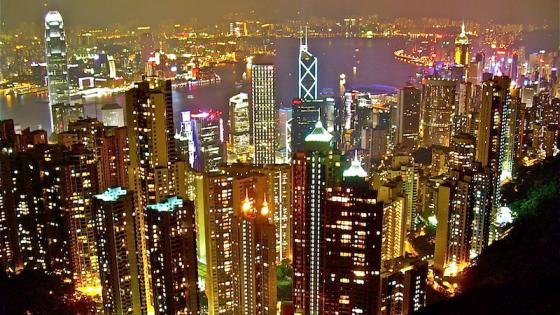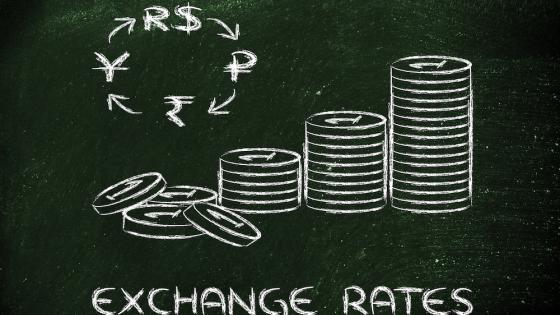Milton Friedman was fascinated by Hong Kong, the British colony whose sovereignty was transferred to China 20 years ago today. The 1976 Nobel laureate in economic sciences regarded the territory as an applied experiment testing the effect of free enterprise and free markets on economic growth.
Friedman took Britain as the control in this experiment, noting its much more interventionist, state-led policy mix in the post-war years. For him, the results of the test were clear: he estimated that the average income per capita in Hong Kong was 28% of that of Britain in 1960, but 137% in 1997, the year of the handover to China.
Such a huge difference in relative performance is clearly worthy of considerable analysis and debate. And yet there has been very little. Friedman thought the laissez-faire economic policies were the key difference, and he ascribed them to one man:
“The difference in the economic policies followed by Hong Kong and Britain was a pure accident. The colonial office in Britain happened to send John Cowperthwaite to Hong Kong to serve as its financial secretary. Cowperthwaite was a Scotsman and very much a disciple of Adam Smith. At the time, while Britain was moving to a socialist and welfare state, Cowperthwaite insisted that Hong Kong practice laissez-faire. He refused to impose any tariffs. He insisted on keeping taxes down.” (Friedman and Friedman 1998)
This month, we mark the 20th anniversary of the handover of Hong Kong, and with improved historical data and the release of more contemporary records, we can revisit Friedman’s experiment.
Using real measures of income (in international purchasing power dollar terms), we would have a similar but slightly different picture of Hong Kong’s success. In 1950, Hong Kong’s per capita income was below 30% of that of Britain. By 1997, it was about the same – and now it is 40% higher, matching that of the US and Switzerland. This is still a remarkable story of economic growth.
Progress in the economy has been matched elsewhere. In 1950, the average person from Britain or the US outlived someone from Hong Kong by five to six years. Now the average Brit dies two years before the average person from Hong Kong, and the average American three years before. Global educational assessment tests put Hong Kong near the top of any ranking. Britain is normally around 20th.
Friedman had huge respect for John Cowperthwaite, who ran the industry and supplies department after the war, and was deputy then actual financial secretary (finance minister) from 1951 to 1971. He was clearly the central figure in establishing Hong Kong’s economic foundations. But he was not alone. His predecessors and successors also pursued a similar policy mix. His immediate successor as financial secretary, Sir Philip Haddon-Cave, called it ‘positive non-interventionism’:
“Positive non-interventionism involves taking the view that it is normally futile and damaging to the growth rate of an economy, particularly an open economy, for the government to attempt to plan the allocation of resources available to the private sector and to frustrate the operation of market forces, no matter how uncomfortable may be their short-term consequences.”
Even today, Cowperthwaite’s principles of low taxation, running government surpluses, and free trade are written in to Hong Kong’s Basic Law.
But it perhaps does Cowperthwaite a disservice to describe him as a simple free marketeer. He was very happy to intervene directly in large parts of the economy. He argued for government regulation or involvement in the provision of public goods, such as water supply and infrastructure. But he tried hard to find the right mix of public-private involvement. He actively regulated monopolies. He believed that companies would follow their own self-interest, and it was through competitive markets that this motive could be channelled for the common good. Absent a fully competitive market, he looked to regulation to control corporate behaviour.
Perhaps the biggest divergence from laissez-faire was in the housing market. Today, around a third of the population of Hong Kong rent a government-constructed apartment, and in total over half the apartments in Hong Kong have some element of government ownership.
This surprising situation is a result of the very large flow of immigration into Hong Kong that took place during the post-war period. With nowhere to live, sprawling shanty-towns sprung up, and in 1953 a fire tore through one of these, leaving 50,000 people completely destitute. The government embarked on a vast programme of house building. The flats that they built were very basic, and very small. But they were safe and affordable, and they still provided a (small) return on the government’s investment.
With the evidence that we now have, and a further 20 years of data, we can better test and assess Friedman’s experiment. But the end result is the same.
There is no doubt that post-war Hong Kong has delivered one of the most dramatic improvements in living standards in the history of the world. Any economist or policymaker interested in raising living standards today should know this story inside-out. And there can be little doubt that the combination of Cowperthwaite’s economic policy framework, and the entrepreneurship of the population combined to deliver this.
But is Hong Kong about to provide a second, follow-on experiment? Hong Kong has had remarkable stability in economic policy since the 1950s – and the results of this 70-year experiment have been consistent and clear.
One of the elements of the story has been the institutional framework within which business operates. Hong Kong has had strong legal institutions, the rule of law, defined property rights and high levels of economic freedom. Some in Hong Kong believe that some of these elements are being eroded. And if they are over the decades ahead, it will provide a powerful, if gloomy, read on how important these elements are in providing a platform for economic growth.
It will require a careful read. Hong Kong has never been a democracy. As a British colony, and now as a Special Administrative Region of China, it has always had limited independent democracy, albeit with mechanisms to understand local sentiment. Despite this democratic deficit, Hong Kong has consistently topped the rankings for economic freedom.
One hopes that this will continue to be so, and that the first Friedman experiment will continue to run with similar results. But should it falter, there will be a thought-provoking debate as to the pre-requisites for economic growth.
References
Friedman, Milton, and Rose Friedman (1998), Two Lucky People: Memoirs, University of Chicago Press.
Monnery, Neil (2017), Architect of Prosperity: Sir John Cowperthwaite and the Making of Hong Kong, London Publishing Partnership.



